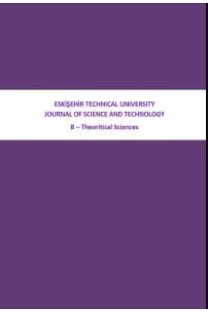SYNTHESIS AND CHARACTERIZATION OF PLATINUM NANOCOMPOSITES
This work related to fabrication of platinum nano particles, reveals considerably outstanding catalytic and electrical properties and preparation of Pt- PS nano composite. For this study Pt nano particles were synthesized by wet chemical method. Pt particles with 0.25%, 0.5%, 1% and 2% concentration amounts were added into the polystyrene solution, acquired by recycled PS. Three different composites which possess a distinct percentage of platinum were produced. Fibers were fabricated by electro spinning method afterward. Pt particles which were produced by wet chemical method and fibers were analyzed by SEM-EDS. There were various test and measurement methods performed to determine the characteristics of the platinum nano composite.
Anahtar Kelimeler:
platinum, nanocomposites, electro spinning, fibers
___
- Bonet, F., Tekaia-Elhsissen, K., & Sarathy, K. V. (2000). Study of interaction of ethylene glycol/PVP phase on noble metal powders prepared by polyol process. Bulletin of Materials Science, 23(3), 165-168.
- Wang, C. D. (2007). Synthesis of Monodisperse Pt Nanocubes and Their Enhanced Catalysis for Oxygen Reduction. J. Am. Chem. Soc. 129.
- Ahmadi, T. S., Wang, Z. L., Green, T. C., Henglein, A., & El-Sayed, M. A. (1996). Shape-controlled synthesis of colloidal platinum nanoparticles. Science, 272(5270), 1924-1925.
- Greeley, J., Stephens, I. E. L., Bondarenko, A. S., Johansson, T. P., Hansen, H. A., Jaramillo, T. F., ... & Nørskov, J. K. (2009). Alloys of platinum and early transition metals as oxygen reduction electrocatalysts. Nature chemistry, 1(7), 552.
- Murphy, S. E. (2009). Synthesis and Characterization of Silver–Platinum Bimetallic Nanowires and Platinum Nanotubes. Springer.
- Jana, N. R., Gearheart, L., & Murphy, C. J. (2001). Wet chemical synthesis of high aspect ratio cylindrical gold nanorods. The Journal of Physical Chemistry B, 105(19), 4065-4067.
- Herricks, T., Chen, J., & Xia, Y. (2004). Polyol synthesis of platinum nanoparticles: control of morphology with sodium nitrate. Nano Letters, 4(12), 2367-2371.
- Chen, J. F., Wang, Y. H., Guo, F., Wang, X. M., & Zheng, C. (2000). Synthesis of nanoparticles with novel technology: high-gravity reactive precipitation. Industrial & engineering chemistry research, 39(4), 948-954.
- Agarwal, S., Burgard, M., Greiner, A., & Wendorff, J. (2016). Electrospinning: A Practical Guide to Nanofibers. Walter de Gruyter GmbH & Co KG.
- Nuraje, N., Khan, W. S., Lei, Y., Ceylan, M., & Asmatulu, R. (2013). Superhydrophobic electrospun nanofibers. Journal of Materials Chemistry A, 1(6), 1929-1946. [11] Khan, W. S., Asmatulu, R., Ceylan, M., & Jabbarnia, A. (2013). Recent progress on conventional and non-conventional electrospinning processes. Fibers and Polymers, 14(8), 1235-1247.
- Huang, Z. M., Zhang, Y. Z., Kotaki, M., & Ramakrishna, S. (2003). A review on polymer nanofibers by electrospinning and their applications in nanocomposites. Composites science and technology, 63(15), 2223-2253.
- Khan, W. S., Ceylan, M., Jabbarnia, A., Saeednia, L., Asmatulu, R., (2017), Chemical And Thermal Investigations Of Electrospun Polyacrylonitrile Nanofibers Incorporated With Various Nanoscale Inclusions, Journal of Thermal Engineering, 3(4), 1375-1390
- ISSN: 2667-419X
- Yayın Aralığı: Yılda 2 Sayı
- Başlangıç: 2010
- Yayıncı: Eskişehir Teknik Üniversitesi
Sayıdaki Diğer Makaleler
SINGLE LAYER ReS2H2 : STABILITY, RAMAN ACTIVITY AND ELECTRONIC PROPERTIES
IMPROVING THE SHEET RESISTANCE OF CVD-GRAPHENE FILMS VIA DOPING
Gülsüm ERSÜ, Fethullah GÜNEŞ, Ahmet AYKAÇ, Mustafa CAN
Explicit Determination of Gromov-Product Types of Five-Point Metric Spaces
KOLLOKASYON SONLU ELEMAN YÖNTEMİ İLE MKdV DENKLEMİNİN SAYISAL ÇÖZÜMLERİ
SULARDAN ULTRASOUND, FENTON VE SONO-FENTON PROSESLERİ İLE RENK GİDERİMİ
SYNTHESIS AND CHARACTERIZATION OF PLATINUM NANOCOMPOSITES
